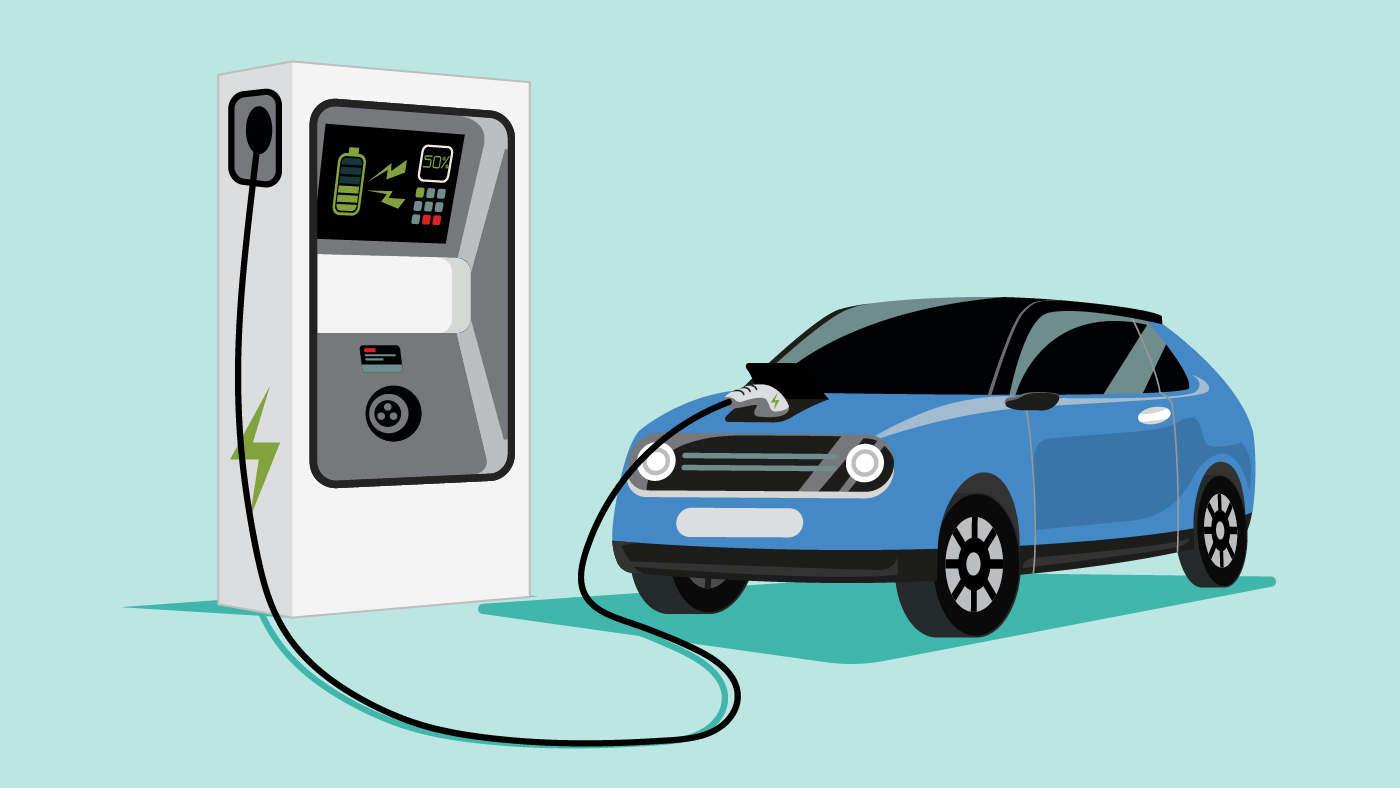Answers to Common Questions About Electric Vehicles
Learn more about the experience of going green and the cost of electric vehicle ownership.

Concern for the environment, advocacy for renewable energy and lower long-term costs have led millions of Americans to say they’d be likely to consider an electric car for their next automotive purchase. But many still have serious questions about how making the switch would impact their routines—and their wallets.
Here are facts to help you better understand how electric vehicles (EVs) can affect your bank account and the environment, and what to consider if you’re thinking about getting one.
How far can an EV go on a charge?
Most EVs have a battery capacity to run about 200 miles on a single charge. In comparison, a typical gas-powered vehicle has a range of 400 to 500 miles on a tank of gas. However, according to the AAA Foundation for Traffic Safety, U.S. drivers travel an average of 31 miles per day, making the electric range just fine for most daily transportation needs.
Electric vehicle consideration: Do you plan to use it for commuting or road trips? It’s best to find an electric car with an operating range and battery power that exceeds your expected use.
EV range is reduced by 41% when cold weather temperatures drop to 20 degrees and the car’s heater is used, and by 17% when they rise to 95 degrees and the car’s air conditioning is used, according to AAA research.
How long does it take to charge an electric car battery?
It depends. Recharging a depleted battery pack with your household current can take 12 hours or more—a problem if you’re in a hurry but not if you simply charge the vehicle overnight. There are many public fast chargers, with some able to replenish half of the battery’s range in less than an hour. And as battery technology improves, so will the EV’s range.
Electric vehicle consideration: Are you willing to upgrade your electric service to support a home charger or faster home charging? And what is the availability of charging stations where you typically drive?
Follow one Member's journey towards an electric vehicle.
Read More >>There were more than 43,000 EV charging stations in the United States as of summer 2021—but only about 5,000 were fast charging stations, according to the U.S. Department of Energy.
Fast charger availability varies widely by state, but you can find charging station locations through the AAA Mobile app (see them at the Near Me map filter).
One other thing to know: AAA Roadside Assistance offers electric car battery charging capability on its vehicles in some cities and states—so a battery power recharge could be as close as your phone. Public charging stations are also becoming more widely available.

Are electric vehicles affordable?
Electric cars start at a little more than $30,000; high-end EVs can run to six figures. But be sure to check for federal, state and local incentives and federal tax credits, which can bring down the price of many brands of new cars.
Electric vehicle consideration: Think about friends and family members who own an electric vehicle or are EV drivers and talk to them about the experience. Ask them how they’ve set up their charging system and what car brands they recommend (options include BMW and Tesla models as well as options from Hyundai, Volvo, Kia, Ford, Toyota and more).
AAA surveyed EV owners and found that:
- 96% of respondents said they would buy or lease another electric vehicle
- 43% said they drove more now than they did with a gas-powered vehicle.
- 78% reported also having a gas-powered vehicle in their household, but they said they did most of their driving (87%) in their electric car.
Are maintenance costs higher for electric vehicles than for gas-powered vehicles?
No. AAA research indicates that although the overall cost of battery electric vehicle ownership is approximately $600 more than gas-powered vehicle ownership (because of higher depreciation and finance costs), some individual expenses are substantially lower.

The cost of electricity to drive 15,000 miles a year averages $546; the cost of gas to drive the same distance is $1,225.
In contrast to traditional cars, electric vehicles don’t require oil changes or engine air filter replacements. If an electric vehicle (including the EV battery) is maintained according to automaker recommendations, maintenance costs are around $949 annually, which is $330 less than a gas-powered car.
Are electric vehicles really that green?

Total emissions associated with driving new EVs are still typically less than those for gas-powered cars.
Although EVs produce zero direct emissions, emissions may be produced by the source of their electrical power, such as a power plant, according to the U.S. Department of Energy. Conventional vehicles, on the other hand, produce direct emissions through the tailpipe, with evaporation from the vehicle’s fuel system and during the fueling process.
You can estimate the greenhouse gas emissions associated with charging and driving an electric vehicle where you live by visiting this calculator from the U.S. Department of Energy.